Equipment
The Henry-Griffitts Fitting Experience
We first met Randy Henry in the Palm Springs area during the beginning of winter 2008. Easygoing but professional, we were immediately impressed by his ability to tell us everything about our game just by seeing us swing a few times. Indeed, we had just met the “human launch monitor” as others had called him that has over 40 years of teaching experience under his belt. This first encounter was just the tip of the iceberg of what we would learn about the Henry-Griffitts history, fitting system, and the people behind the name.
Randy Henry started playing golf with his family when he was very young and became quite passionate about the game. A serious accident changed the way he looked at the game in the 1970s. He became more aware of the golf swing and the actual equipment itself. It was apparent to him that equipment could make or break the game for many golfers. With Jim Griffitts he founded Henry-Griffitts in 1983. These golf pros wanted to focus on equipment that was not made for the masses but for an individual golfer’s game. They wanted a smaller company that would give them total control over the way the clubs were fit and built as opposed to the “one size fits all”, off-the-rack concept that permeated the industry at the time. Whatever the Tour pros played at the time was what was sold on the shelves of golf shops. This, Henry-Griffitts recognized, did not serve the average golfer very well at all in most cases.
During our first encounter Randy Henry and his son Randall brought out the familiar HG fitting cart full of right-handed gear to try out. The cart has a plethora of possible shaft and head combinations and one is fit based on their swing and lie angle among other factors. The righty and better golfer of us spent the next half hour fine-tuning his swing with Randy.
Before I go any further let me tell you a bit about “us”. The righty is a high swing speed, lower handicap golfer that has played for many years. He’s about 6’ and an ex-professional athlete that is has been put in X flex shafts for every fitting that we’ve been to. The lefty (that’s me) is an average swing speed, higher handicapper that has played just about 4 years. I’m always fit to men’s regular flex shafts and this is likely due to being 5’10” and athletic.
You probably won’t believe me when I tell you that Mr. Henry had the righty hitting a driver blindfolded. I’m not kidding. Randy knows how to get a golfer to focus on the part of his swing that works and encourages one to use their natural swing or what comes easily to a golfer. In addition, he is honest about what you need to be successful and does not give you tips to fix a swing that isn’t broken or try to fit you to a particular mold. Some golfers can hit any equipment and be good. Other golfers benefit immensely from specific equipment. The righty was in the first group and I fell into the latter according to Mr. Henry.
The next time we saw Randy was in Orlando at the 2009 PGA Merchandise Show. Again, he was talking people through the mechanics of a golf swing in the aboutGolf simulator that was set up. Although this encounter had nothing to do with an actual fitting, it is worth mentioning because of the interesting people we met with the HG/aboutGolf group. We met the first tour player to use Henry-Griffitts clubs at this function, Mr. Homero Blancas. Knowing that I was sitting at a table with a legend of the game I couldn’t help but ask Mr. Blancas to tell me stories of the game of golf in his lifetime. He obliged and told us that he learned the game because his father was a groundskeeper at a golf course. He played as often as he could and eventually became very good. He once shot an impressive 55 in a college tournament on August 19, 1962 and told me that he didn’t quite realize what was happening as he played the round. He said that playing one hole at a time was the secret to his success for this accomplishment. Indeed, it was a treat to hear his recollections.
Our third encounter with Mr. Henry was again in the California desert. This time he concentrated on what could improve my game and had the cart full of lefty options. One thing that he immediately pointed out was that my follow-through needed a bit more of a following all the way through as far as my wrists were concerned. I tended to have a horrible slice at times that sent the ball well off of the fairway. Where one professional had suggested I open the clubface more, Randy suggested I leave it in its natural spot when on the ground and completely turn my wrists over at the end of my swing. When I did the ball went straight in front of me as it was meant to each time. Imagine that. The other thing he told me was about my lie angle. Five degrees flat, he said, and followed up with other famous pros with the same sort of measurements. HG claims that over their history they have observed that a majority of golfers are playing with incorrect dynamic lie angles. Therefore, the keystone of an HG fitting is determining this piece of information.
Another issue I have had recur with my game is not enough launch from the ball. I can get a respectable distance but when I get a bad one off it resembles a line drive from a baseball bat. Throughout the fitting it didn’t matter how poorly I hit a shot, he was quite encouraging the entire time. It never seemed forced to me at all, I saw a golf enthusiast with such a love for the game that he wishes everyone who picks it up to succeed.
Just over a week after this final fitting, new HG clubs arrived on my doorstep. I was more than excited to try the HG GL II irons out and just had to get to the range. I’ve got a late uncle that swore by his HG clubs that he was fitted for back in the late 1980s and I would finally see what he was raving about. How much better would I hit the ball with these new irons than my three-year-old X-18s that I really loved? These Callaways that I was gaming had been fitted to me and recently had the loft and lie angles adjusted so they would be at the correct specs to not have gaps between the clubs. I had many lessons and had developed a certain swing that compensated one way or another in order to play. Mr. Henry told me that the correct clubs would make a significant difference for me.
.jpg)
So far…he’s right. Sure, I’ll hit a bad one every so often – after all, nobody is perfect even with perfectly fit clubs and all the concentration in the world. What I do notice? My signature slice doesn’t rear its ugly head so often anymore. In addition, I am getting a lot more height under the ball. One of the best things about this whole experience is having wedges that I can actually hit with a result that they are supposed to have instead of some crazy shot that looks like I’ve never picked up a club before. I’m quite excited by these new clubs and can’t wait to game them a few times to see if my score improves at all. Yeah, I know what you’re thinking, but I mean it…so far I am very impressed with these clubs. Even more I’m excited to have learned a few tidbits from such an experienced pro like Randy Henry. The value of the entire experience is not lost on me at all.
The info on the HG website for these GL II irons is as follows:
The GLII is the evolution of the best selling Henry-Griffitts GL line and features a mid-size head design, 431 stainless construction, tour-grind leading edge, and a bottom weighted, offset blade with a lie range of 7° flat to 6° upright.
# Length Loft Lie Bounce
1-iron 39½ in. 15° 59° 3°
2-iron 39 in. 17° 59½° 3°
3-iron 38½ in. 20° 60° 3°
4-iron 38 in. 23° 60½° 3°
5-iron 37½ in. 26° 61° 3°
6-iron 37 in. 30° 61½° 3°
7-iron 36½ in. 34° 62° 3°
8-iron 36 in. 38° 62½° 3°
9-iron 35½ in. 42° 63° 3°
P-iron 35½ in. 46° 63° 3°
T-iron 35½ in. 50° 63° 6°
S-iron 35 in. 55° 63½° 12°
Lob-iron 35 in. 60° 63½° 4°
So let me clarify a few things – Henry-Griffitts and aboutGolf joined forces in late 2008 to make a software version of Randy Henry. Actually, Randy and his son Randall are working to produce advanced software that uses artificial intelligence that will integrate with HG’s custom data measurement system to create a virtual Randy. The goal is to provide teaching and fitting advice and guidance. They call this “TechCentric Club Fitting” and the two components – data measurement and fitting software will make it possible for others to have nearly the same experience of being fit by Randy Henry himself.
HG has also recently introduced a new line of irons: The new OS-1 Irons. Here’s the scoop straight from HG’s recent press release. I’ve not seen these in person or tried them for myself – this is the only info I have:
The successor to the RDH 3 Iron Series, the OS-1 features a Curvilinear Sole to offer improved consistency, control and playability. The Curvilinear Sole is designed with optimized weight distribution — a lower center of gravity, strategically placed tungsten/copper sole weights, wide sole and cutout back design. The result of the Curvilinear Sole is apparent at club-ball impact. Even off center hits are improved and the ball launches into the air faster and higher.
"The OS-1 is exceptionally forgiving, but gives the player the freedom to play all shots," says Randy Henry, founder of Henry-Griffitts. "The sole has great playability and allows a wide variety of shots for all golfers – zero to high handicaps."
OS-1 Irons will be available in May 2009 from Henry-Griffitts Certified Teachers nationwide. The suggested retail price for the OS-1 irons from Henry-Griffitts is $160.00 per club (steel shaft) and $175.00 per club (graphite shaft).
OS-1 Iron Features
Tungsten/Copper Sole Weights: Lowers the center of gravity, moving it away from the face to produce a higher launch angle. Strategically located to increase the moment of inertia and stabilize the head through every shot.
Cutout Back Design: Reconfigured to allow for a more optimal distribution of weight and increase the consistency of ball flight.
Fly-Cut-Machined Faces: Guarantees absolute flatness of the face.
Machine-Engraved Grooves: Machined scorelines improve consistency, especially when combined with an absolutely flat face.
Curvilinear Sole : Designed for performance from any lie on any ground condition.
Softest 431 Stainless Head: Using the softest 431 Stainless available to construct the head allows greater lie angle options and superior feel.
OS-1 Iron Specs
Availability: 3, 4, 5, 6, 7, 8, 9, PW, TW, SW
Lie: 6° up to 7° flat
Weight: Adjustable, dependent upon shaft length and material
Body: 431 Stainless
Weights: Tungsten/copper
Face: Machined flat (fly cut)
Grooves: Machine engraved
Overall, I truly enjoyed my entire experience with the HG fitting system and everyone that I met along the way. I’ll revisit my enamored feeling after a few months to see how satisfied I remain but so far – so very good! These are great clubs for those who aren’t hung up by carrying a major OEM label and desire the more personalized experience. Yes, there is a price for this customization and it’s not a treatment for the golfer that feels the need to change clubs every 60 days or so. For the player that could use some help from meticulously fit equipment or those with the budget and taste for this personalized treatment, Henry-Griffitts fits the bill.
- LIKE6
- LEGIT2
- WOW0
- LOL0
- IDHT0
- FLOP0
- OB0
- SHANK0
Whats in the Bag
WITB Time Machine: Hideki Matsuyama’s winning WITB, 2021 Masters
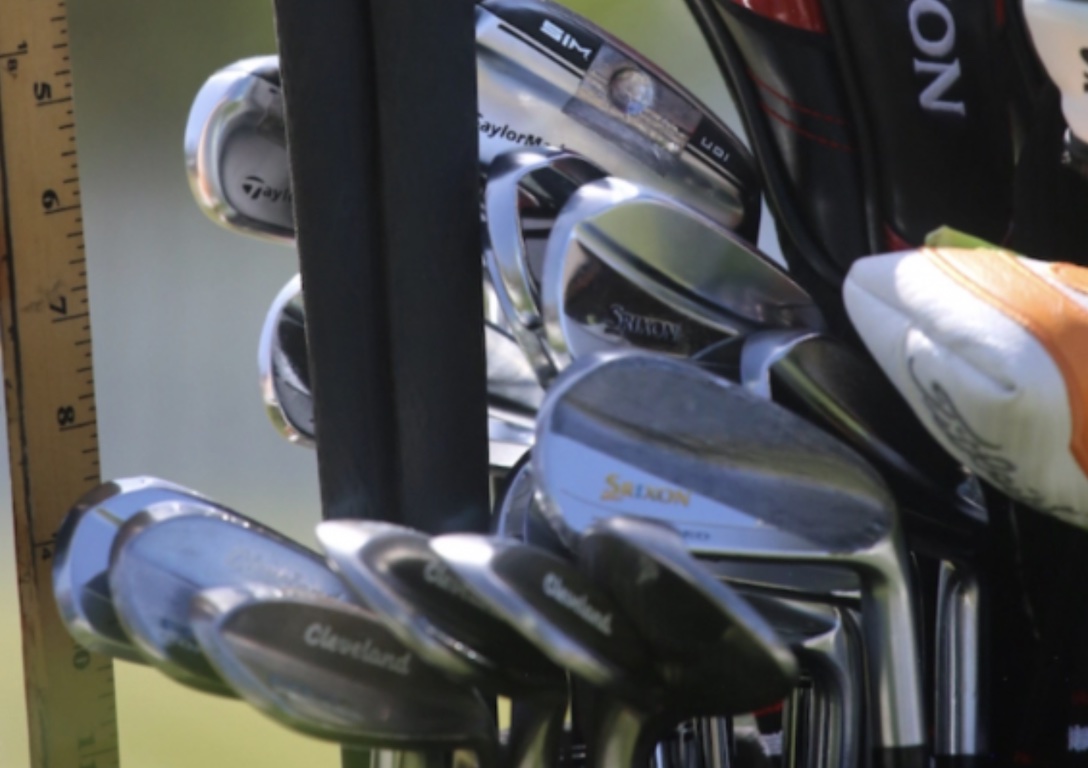
At the 2021 Masters, Hideki Matsuyama broke through to claim his first major championship, winning the first major for Japan in the process. Matsuyama’s led by four strokes entering the final day. Ultimately, a final-round 73 and 10-under tally was one better than Will Zalatoris could manage and Matsuyama donned the green jacket.
Take a look at the clubs Matsuyama had in play three years ago below.
Driver: Srixon ZX5 (9.5 degrees, flat)
Shaft: Graphite Design Tour AD DI 8 TX
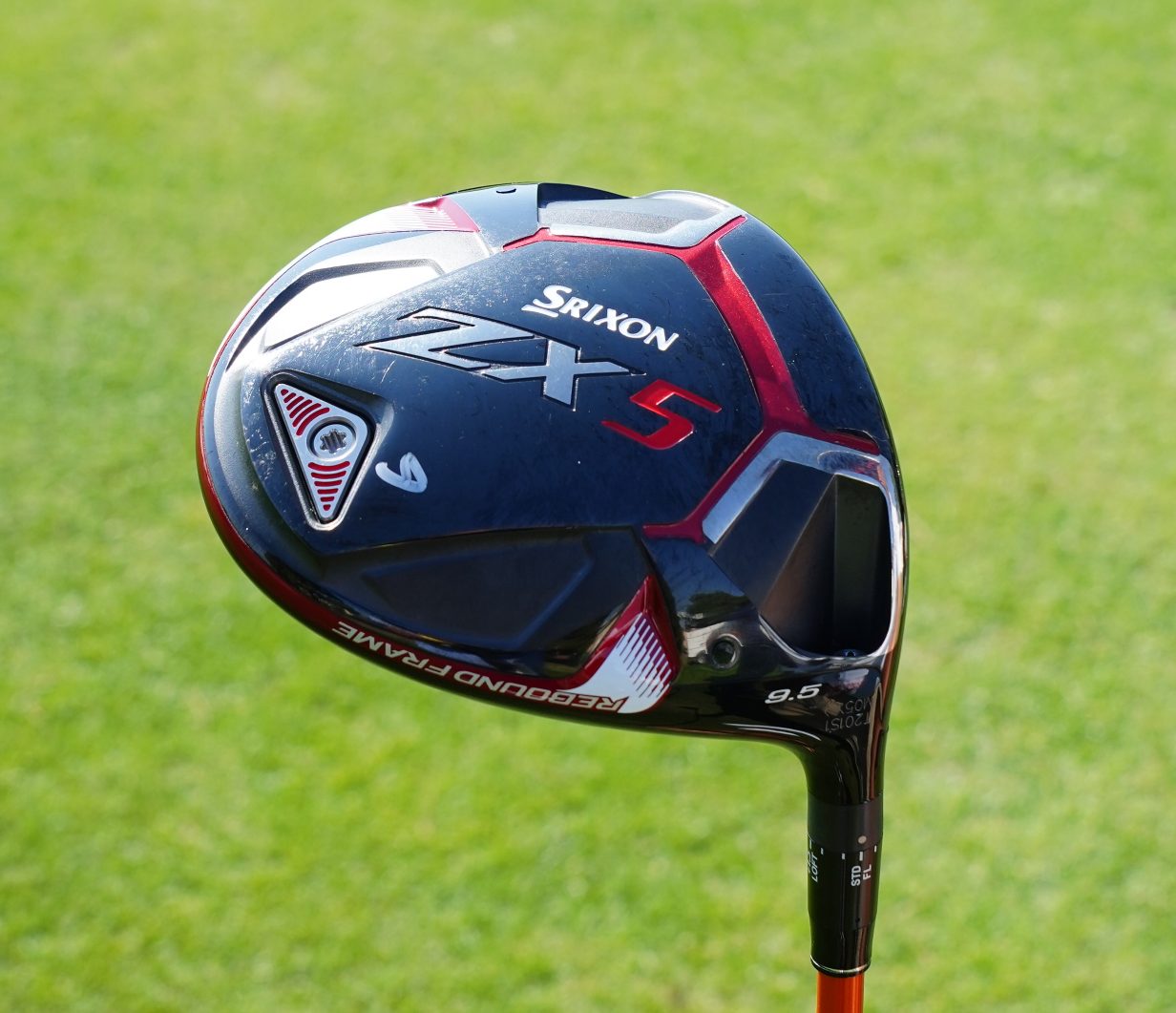
Photo credit: Yoshihiro Iwamoto
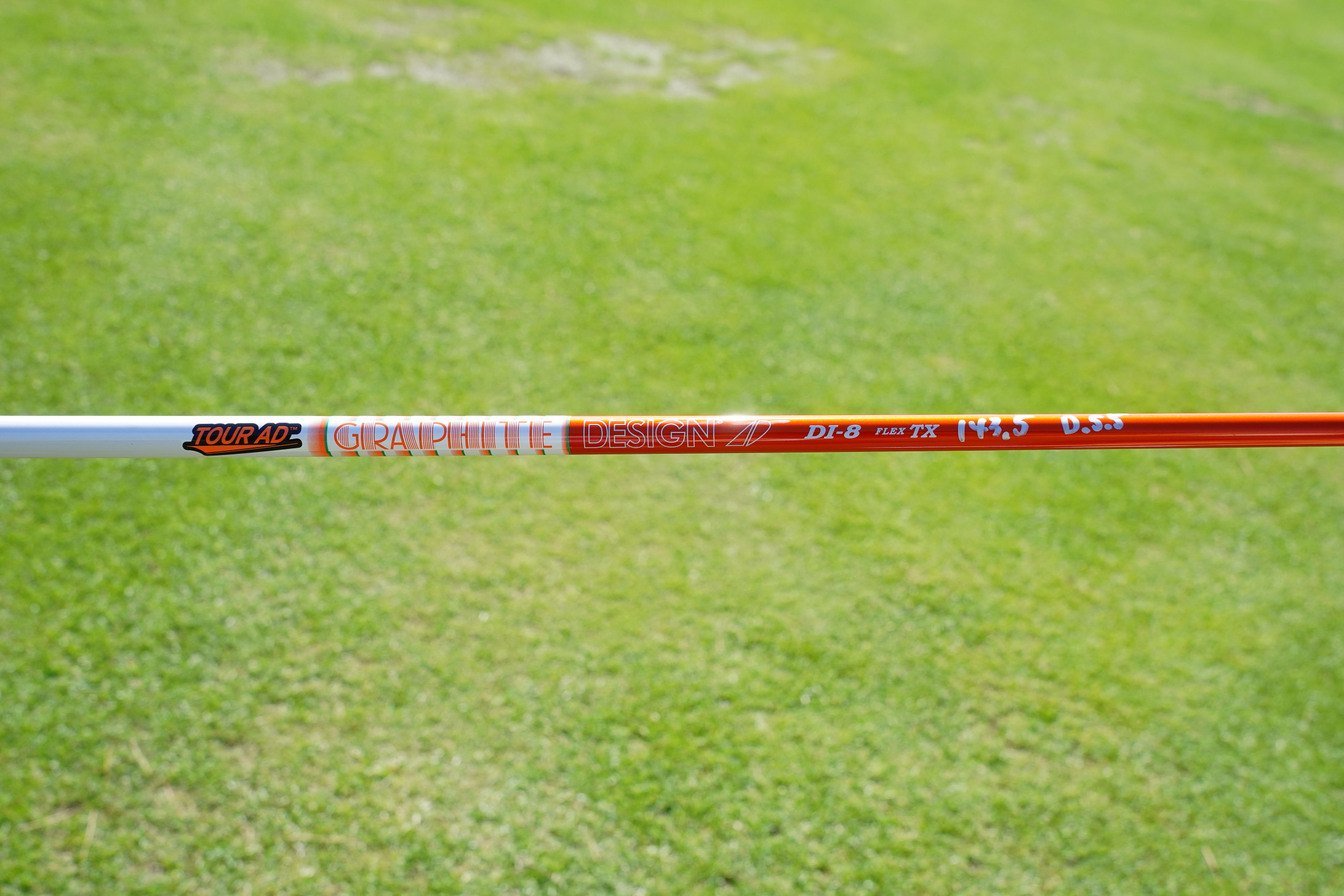
3-wood: TaylorMade SIM2 Titanium (15 degrees)
Shaft: Graphite Design Tour AD DI 9 TX
Utility: TaylorMade SIM UDI (3)
Shaft: True Temper Elevate Tour X100
Irons: Srixon Z-Forged (4-PW)
Shafts: True Temper Dynamic Gold Tour Issue S400
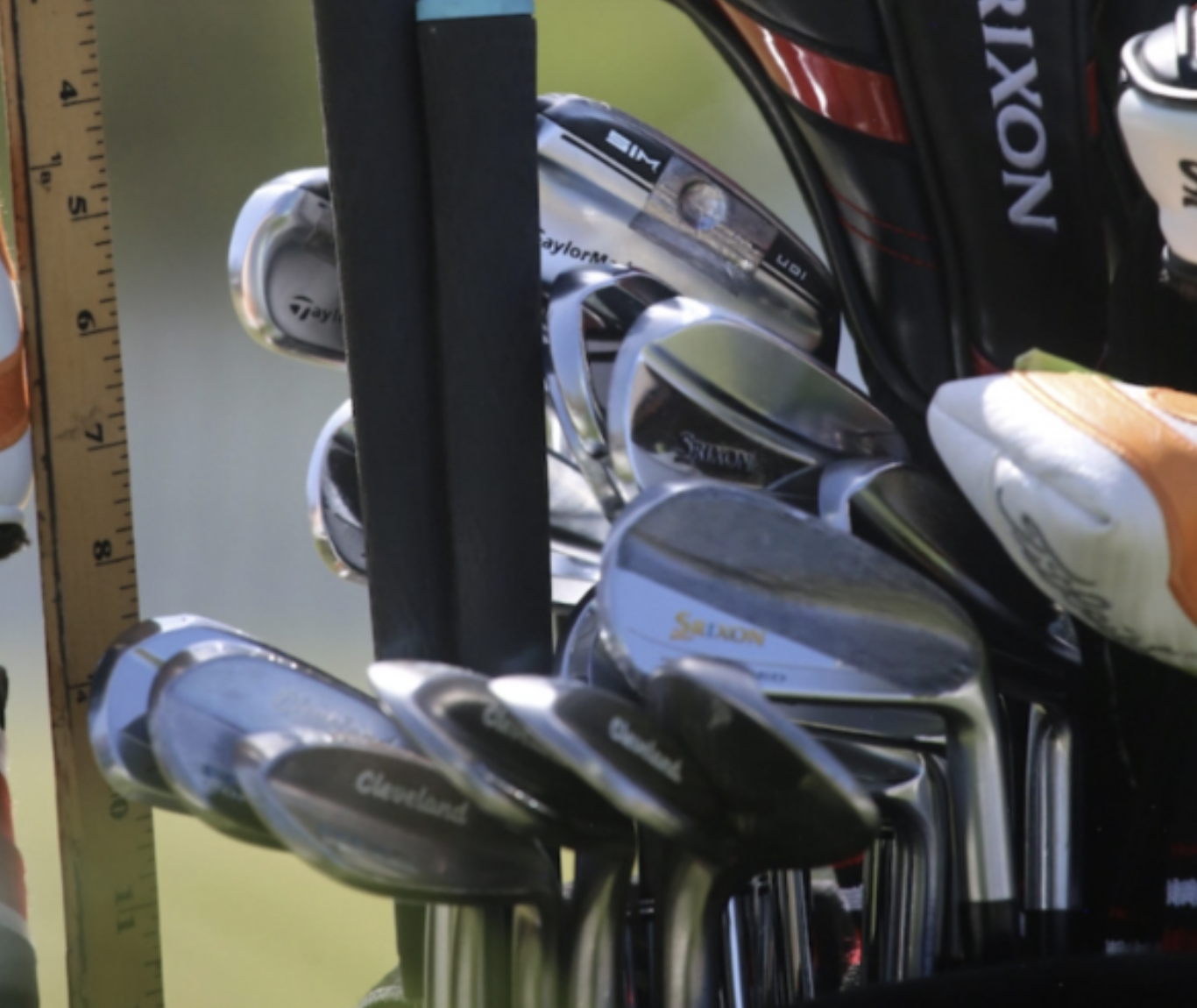

Wedges: Cleveland RTX 4 Forged Prototype (52-10, 56-8 @57.5, 60-08 @62)
Shafts: True Temper Dynamic Gold Tour Issue X100 (S400 in 52)
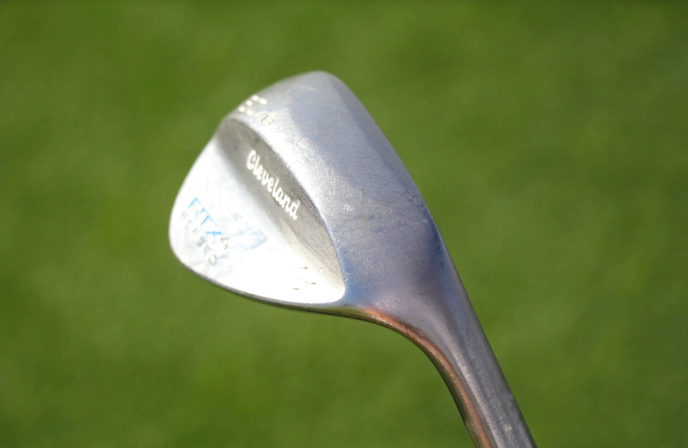
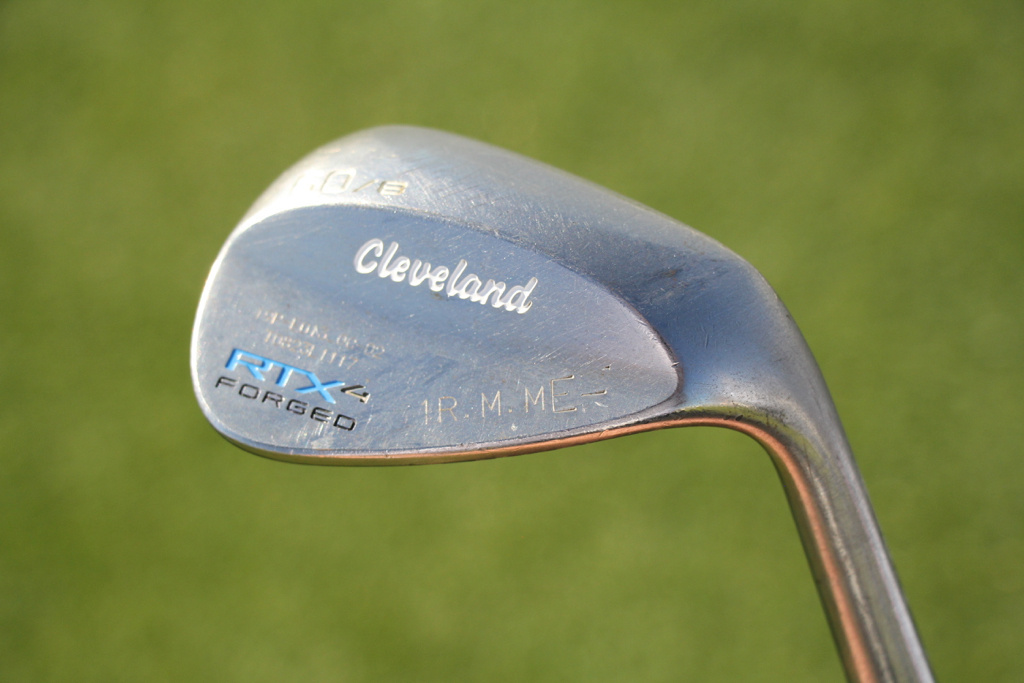
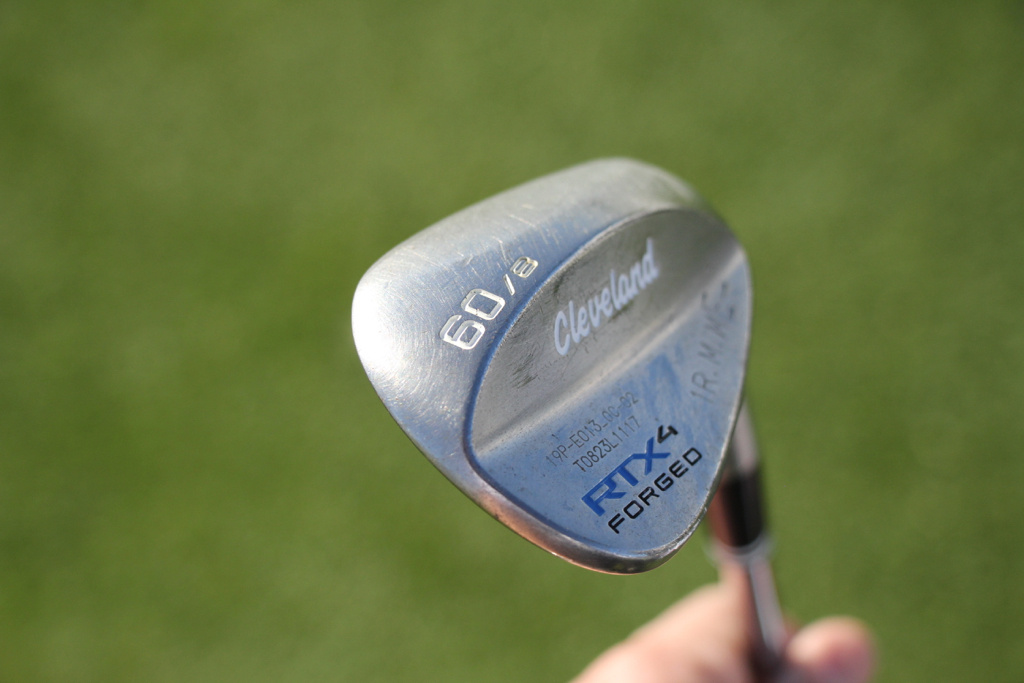
Putter: Scotty Cameron Newport 2 GSS
Grip: Lamkin Deep-Etched Full Cord
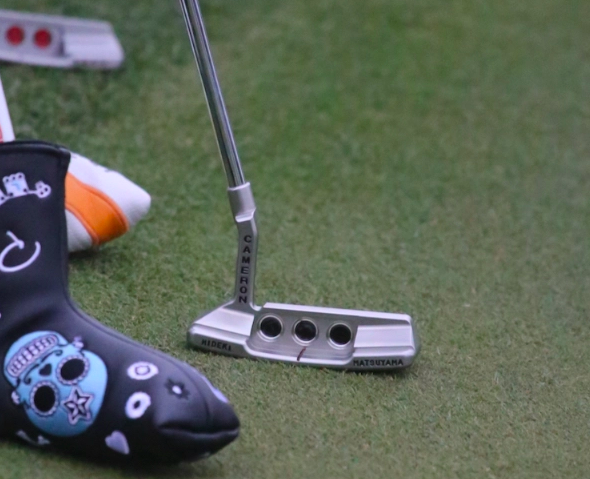
Ball: Srixon Z-Star XV
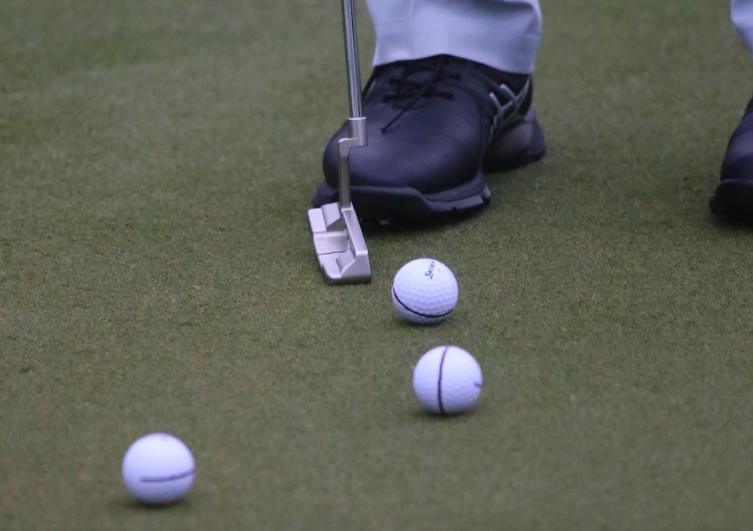
Grips: Iomic X
- LIKE2
- LEGIT1
- WOW1
- LOL0
- IDHT0
- FLOP0
- OB0
- SHANK0
Equipment
Best irons in golf of 2024: The shotmakers
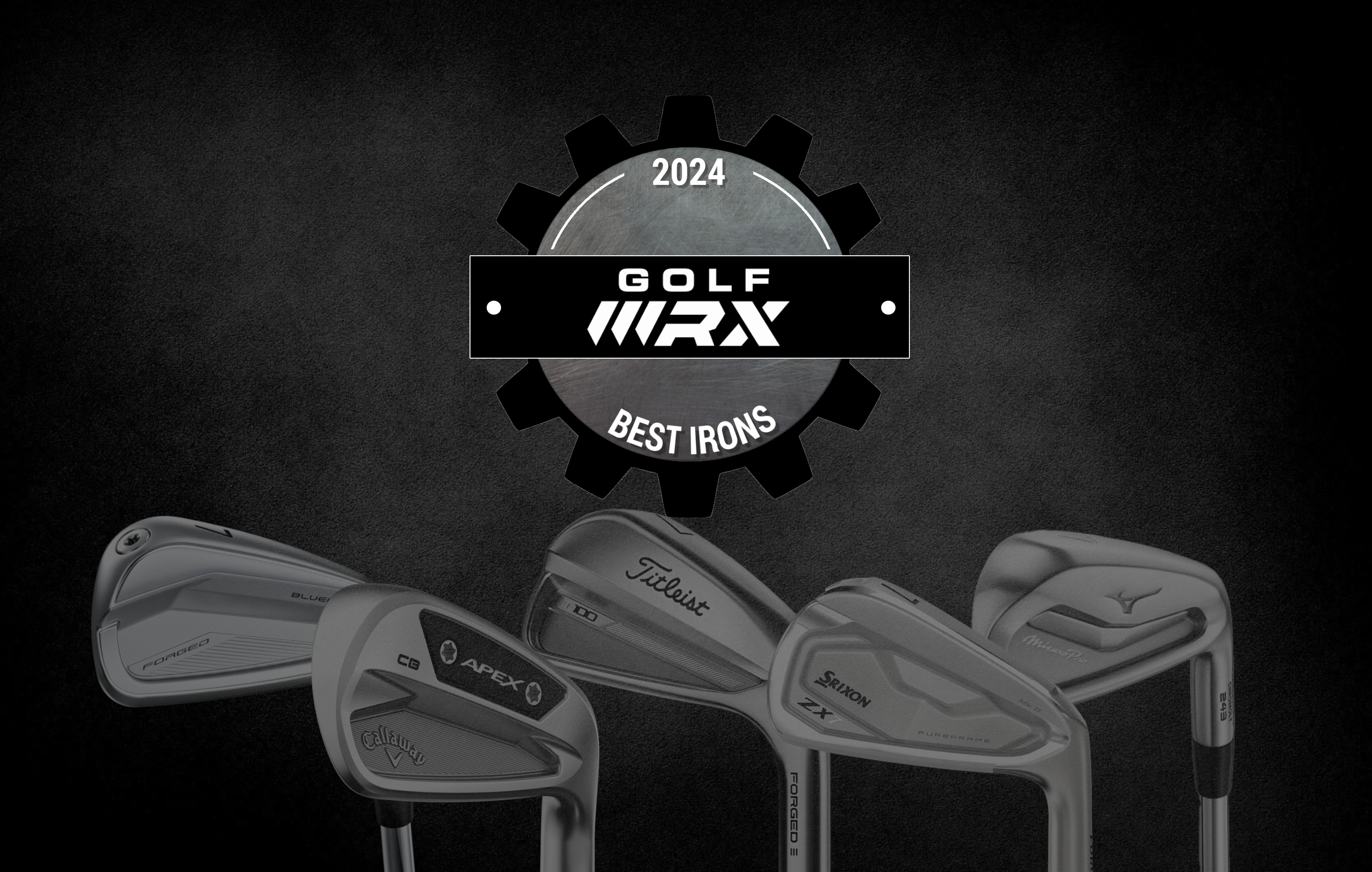
In our effort to assemble the 2024 best irons, we have again compiled an expert panel of fitters to help you find out which of the 2024 irons is best for your game.
Ultimately the best way to find your personal best iron set is to work with a professional fitter using a launch monitor. The difficult part is a lot of people don’t have easy access to fitters, launch monitors, and club builders — so at GolfWRX, we have done a lot of the work for you.
We are in the era of not just maximizing distance but also minimizing the penalty of common misses for each player — this applies to irons just as much as it does with any other club in the bag. And of course, proper set makeup and gapping is essential. This is why, now more than ever, custom fitting is essential to help you see results on every swing you make.
We want to give you the tools and information to go out and find what works best for you by offering recommendations for your individual iron set wants and needs with insight and feedback from the people who work every single day to help golfers get peak performance out of their equipment.
Best irons of 2024: The process
The best fitters in the world see all the options available in the marketplace, analyze their performance traits, and pull from that internal database of knowledge and experience like a supercomputer when they are working with a golfer.
It’s essentially a huge decision tree derived from experience and boiled down to a starting point of options—and it has nothing to do with a handicap!
Modern iron sets are designed into player categories that overlap the outdated “what’s your handicap?” model, and at GolfWRX we believe it was important to go beyond handicap and ask specific questions about the most crucial performance elements fitters are looking at.
These are the best iron categories we have developed to help you determine which category is most important for your swing and game.
Best irons of 2024: The categories
- Overall performance
- Easiest to launch/Slower swing speed
- Pure enjoyment
- Shotmakers
- Most technology-packed
- Best blade
2024 Best irons: The shotmakers

Each one of these irons was designed with a single purpose: to provide the ultimate shotmaking weapon. You don’t have to be a tour player to appreciate the pleasure of hitting a well-struck shot with a club engineered to offer superior feedback. This category is all about control — and that doesn’t mean it “has to be a blade.”
Titleist T100
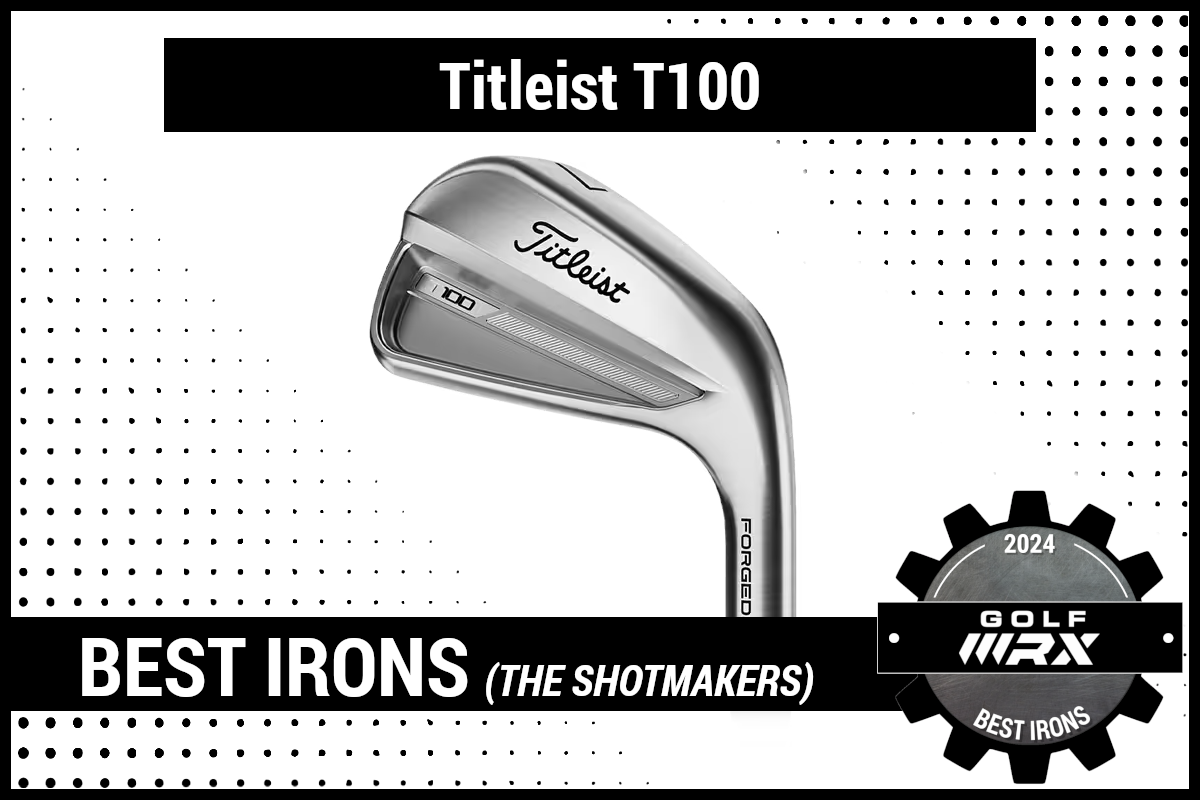
Their story: The “players iron” of the new T-Series family, the T100 iron features an all-new Tour-designed sole, which was inspired by discussions with both the tour staff and the Vokey wedge design team. It features a new variable bounce sole design, which provides less bounce in the heel and more bounce in the toe to facilitate better turf interaction and improved feel.
Fitter comments:
- “More tech than blades but just as workable. It’s why it gets play on tour. Not a lot of offset and fairly traditional lofts as these want to create some spin for maintaining a steep enough landing.”
- “Number one played iron on tour. It definitely gets the love it deserves for sure…especially from a turf interaction standpoint. It definitely gets to the turf nice and quick compared to some of the previous generations.”
- “Incredible feel and feedback while offering a good amount of forgiveness in this category. Can play it from any lie and hit any shot…one of the most played irons on tour for a reason.”
- “It has good feel. It’s really forgiving for that compact-looking head. It’s got a great sole on it that works really well. It’s got weaker loft, and so therefore it’s going to spin more. It’s really good for the guy with a lot of speed, because it’s not going to jump and go all over the place.”
- “It’s always been one to throw in the mix for that player who comes in looking for a players iron but not quite a blade. They’ve just slowly kind of kept working on that, that product that’s been in their cycle for a while. I don’t want to say it’s kind of gold standard-like, but that’s definitely one that’s going to be in the mix.”
For more photos/info, read our launch piece.
Srixon ZX7 Mk II
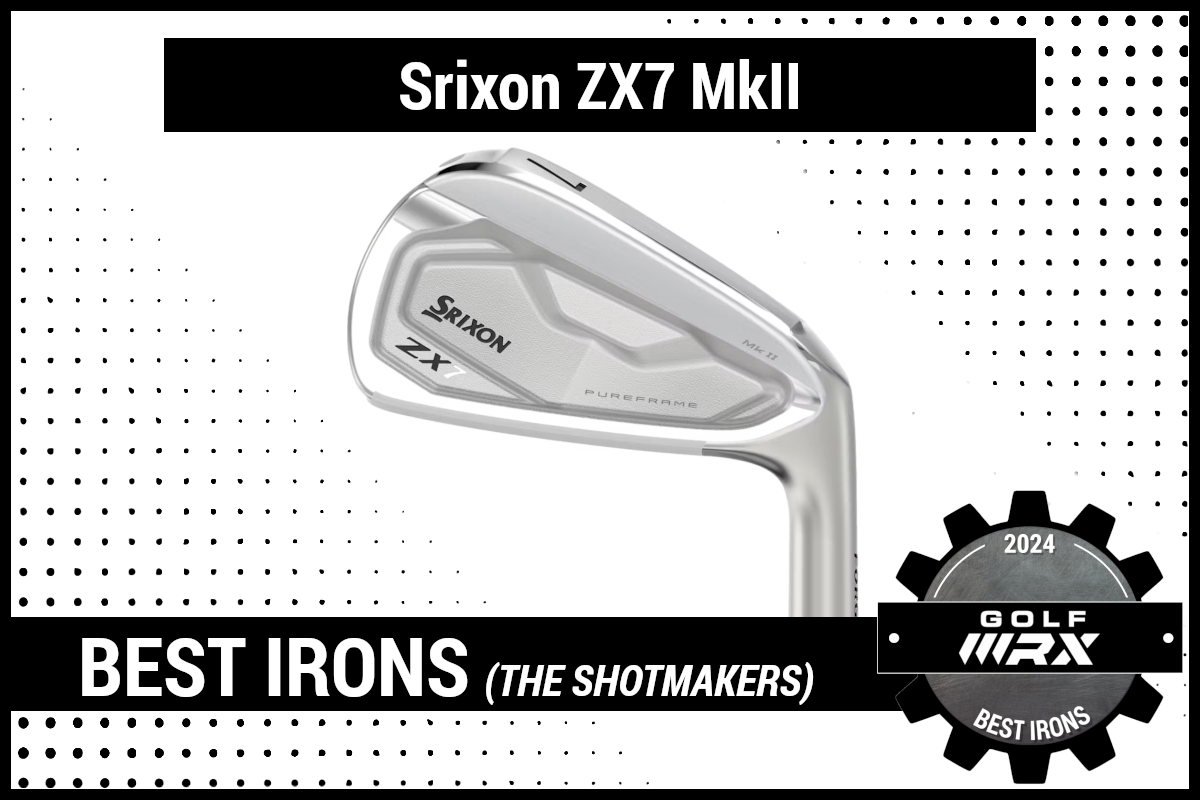
Their story: The players iron ZX7 Mk II features PureFrame: an 80-percent thicker portion of 1020 carbon steel forged behind the sweet spot in the body of the iron for soft-yet-solid-feeling impact. Also significant to the design: A refined Tour V.T. Sole Proprietary sole widths, bounce angles, and notches in the heel and toe of the club aid clean contact from a variety of lies.
Fitter comments:
- “What I love about that is for that guy that hits it, like square on the face of the golf club. It’s, this is the way I kind of explain to customers and they hit it like, it’s not gonna be the longest. It’s probably not gonna be the straightest, but you will hit seven iron in the exact same distance every time you hit it. And, and I think that’s the appeals to that better player because like very rarely do.”
- “I’m a personal fan of it. No hot face. No jumpers, does a great job of controlling the spec which we like a lot…quite forgiving. That’s a, that’s a, that’s a major player in that category.”
- “I mean, two of the five fitters out here play them. I mean, they’re awesome, like they’re still, you know, a small compact players iron, but you still get a lot of help and forgiveness out of them, which I like. You see a lot of these on tour that are non, you know, non-contract guys playing them.”
- “They did a really good job of not screwing up a good thing. ZX7 was fantastic. It seemed like 50 percent of the non-contract guys in pro golf played that iron. It continues to give very consistent numbers. The better player wants a consistent number. They need to know it’s going to go that distance. This club does that very well.”
- “Srixon has been the “sleeper” iron company for a number of years now, but I think the secret is out. The ZX7 Mk II fit many different player types, from tour pro to mid-handicapper. The forging is very soft and forgiving, and the iron is very workable for the player with more ability. They didn’t change the shape from ZX7 to Mk II, and I think that’s a great thing.”
For more photos/info, read our launch piece.
Callaway Apex CB
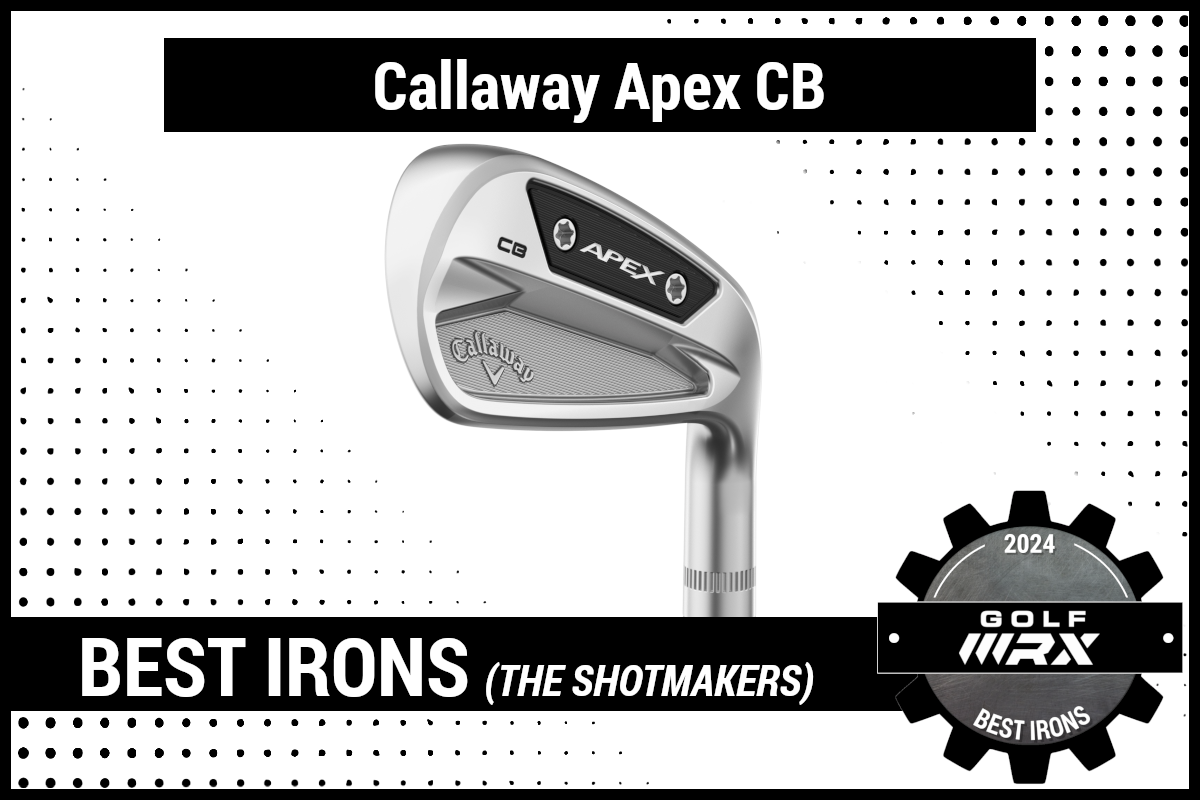
Their story: Callaway touts an all-new forged construction in its 2024 Apex CB irons and its associated feel and workability. Forged from 1025 carbon steel in a five-step process, Apex CB ‘24 irons also feature MIM weighting in the toe and similar progressive CG and Dynamic Sole Design to the Apex MB irons.
Fitter comments:
- “Excellent offering. Clean and easy to aim. Always a great iron.”
- “Yeah, from my understanding, TCB, like that was kind of its replacement. and TCB was not easy to hit, in my opinion. I find that the guys are hitting it. It’s actually, it’s pretty forgiving for what it is. Guys that are looking for more of that just kind of solid piece, they don’t want to get any of that hollow stuff.”
- “I really like it. I think it’s a great club. It’s a little, a little above my pay grade in terms of skill, but a really good feeling club. It seems like it’s a good iron all around for that player who, you know, is looking for that CB or that better-player type club.”
- “I think for that guy who wants something that feels good, that CB just feels fantastic and for how dinky and tiny that thing is, I think it’s not unforgiving. And it just kind of checks all the boxes from a look, sound and feel standpoint. It’s definitely a really good, really good iron for sure.”
For more photos/info, read our launch piece.
Mizuno Pro 243
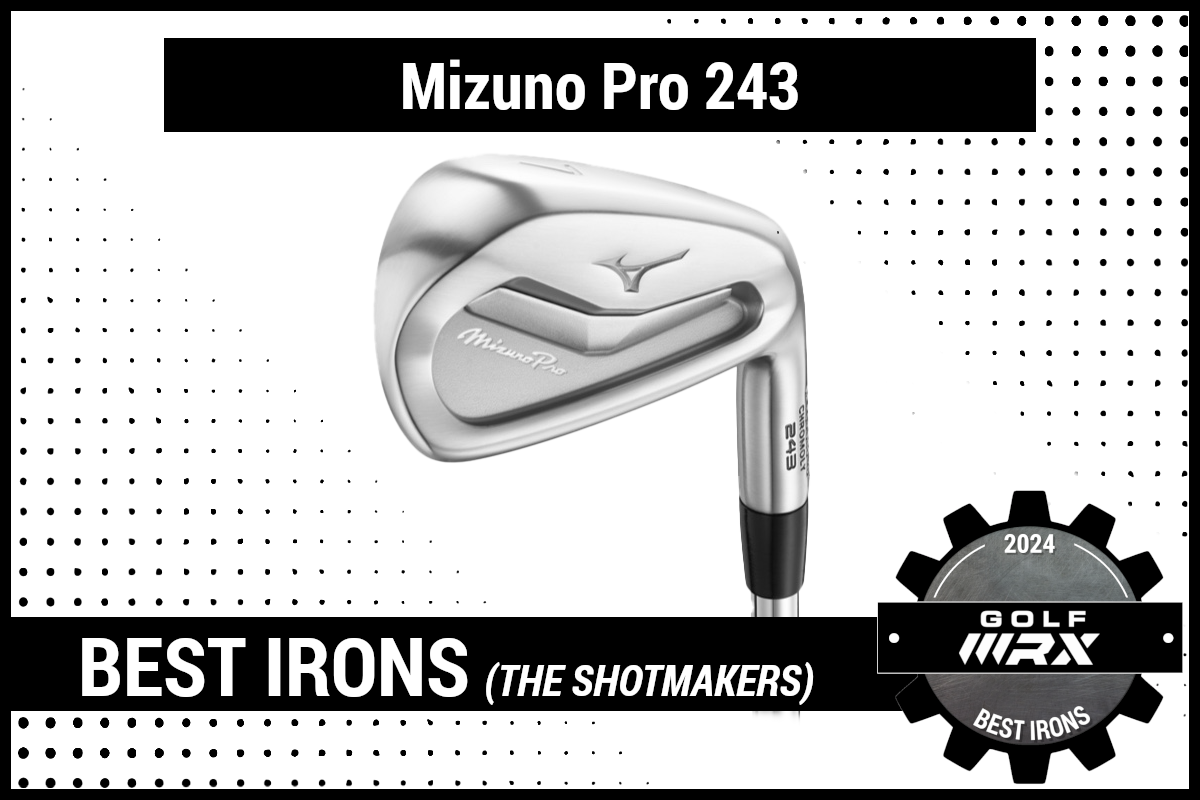
Their story: 4- through 7-irons are Grain Glow Forged HD from a single billet of 4120 Chromoly steel, while 8-GW are forged from 1024 Elite Mild Carbon steel. 4 through 7 irons feature a Flow Microslot for faster ball speeds and increased launch (thanks to more rebound area. The soles of the 243 irons are equipped with a Wrap Around Sole Grind for better turf interaction as well as increased bounce angle. The Soft Copper Underlay is again present as is the Full Satin Brush finish.
Fitter comments:
- “Amazing forgiveness and workability in this category. The turf interaction is awesome for those who draw and fade the ball.”
- “Best looking of the shot-making irons.”
- “Minor refinements from the last one. And for the category of iron, it’s pretty forgiving. They cleaned up the cosmetics a little bit. I mean, it’s a really, really, really good iron for sure.”
- “Mizuno, the, the 243, you know, that’s another great one. Forged one-piece golf club that’s super solid — no jumpers, Very similar to the ZX 7 but looks better.”
- “That one continues to be kind of like a unicorn in this category because I like the ball speed…Like almost to the guy, we get more ball speed with that thing.”
For more photos/info, read our launch piece.
Ping Blueprint S
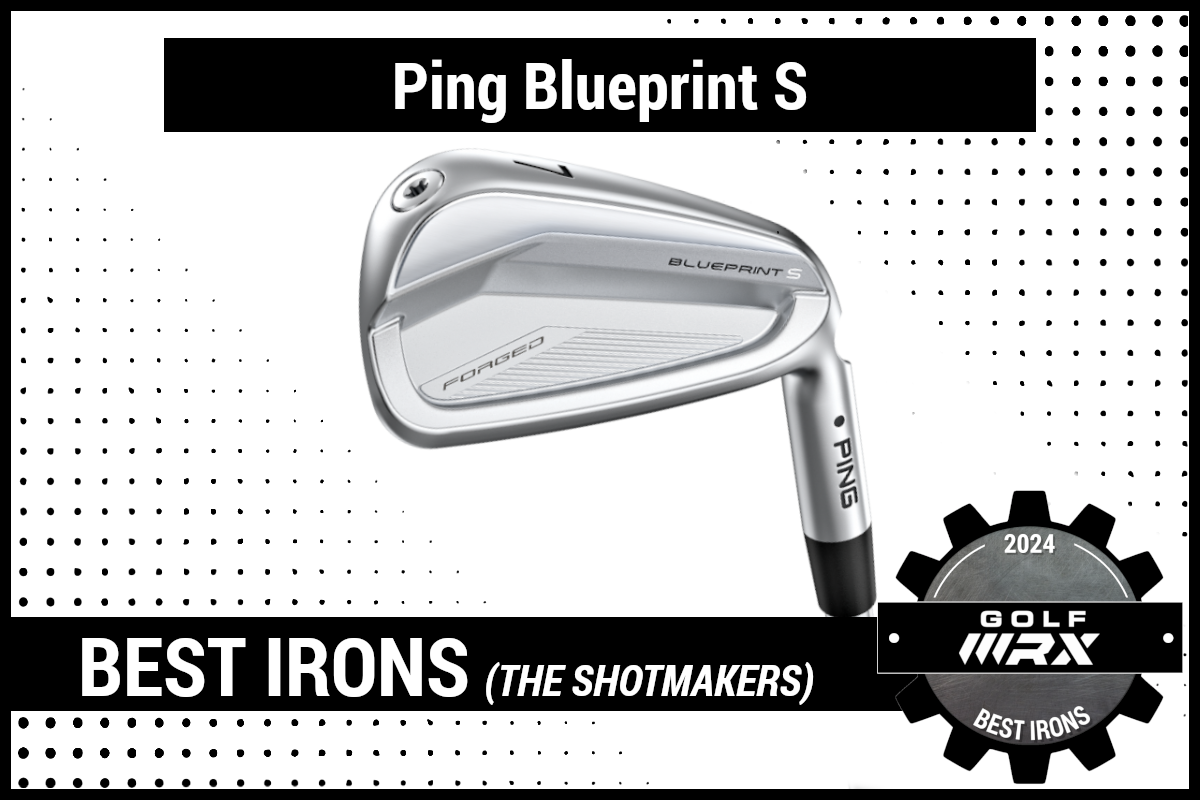
Their story: Developed after extensive testing with top Ping professionals, the Blueprint S features a forged cavity-back design, influenced by Ping’s existing “S” series irons. The compact shape, thin top line, and minimal offset make it visually appealing to forged club/blade enthusiasts. The forged 8620 carbon steel head has a clean cavity design with a textured pattern and hydropearl 2.0 chrome finish. Precision-milled grooves and a high-density toe screw enable swingweight fine-tuning.
Fitter comments:
- “These things are pretty looking. The reduced offset and thinner topline makes this look like a blade, but you get the help and forgiveness. These are fast through the turf and are super easy to work.”
- “The performance of the iron, it’s great. It’s a rare forged iron from Ping. It looks good. It’s very forgiving. It’s probably the best-performing iron in its category. We’ve been getting a lot of people asking about it. We’ve seen some guys pair it with a blueprint T, a little bit. It looks really good. It’s their best looking one by far.”
- “I’m a big fan of that iron. I was little surprised by it. I thought it was going to be kind of intimidating from all the tour use and then getting it out on the course. It’s actually a pretty playable iron. It’s been the winner in that category for us.”
- “What you’ve got is a forged golf club that’s designed by Ping where, you know, they’re always going to the performance first and look and feel second and now you’ve got something that’s got the look and feel that a lot of good players want to feel and great performance.”
- “I think it’s something that they needed to fill that niche for that forged kind of guy that’s more compact without going into like the old blueprint or the Blueprint T…super tiny blade.”
For more photos/info, read our launch piece.
Best irons of 2024: Meet the fitters
- Adam Rathe: Club Champion
- Adam Scotto: Club Champion
- Adam Seitz: Club Champion
- Aidan Mena: Club Champion
- Alex Dice: Carl’s Golfland
- Alex Praeger: Club Champion
- Ben Giunta: The Tour Van
- Blake Smith, PGA: True Spec
- Bo Gorman: True Spec
- Brad Coffield: Carl’s Golfland
- Brett Ott: Club Champion
- Brian Riley: Club Champion
- Cameron Scudder: Club Champion
- Carmen Corvino: True Spec
- Christian Sandler: Club Champion
- Clare Cornelius: Cool Clubs
- Dan Palmisano: Club Champion
- Dane Byers: Club Champion
- Darren Joubert: Club Champion
- Dennis Huggins: Club Champion
- Drew Koch: Club Champion
- Eric Touchet: Touchet Performance Golf
- Erik Gonzales: Club Champion
- Evan Morrison: Club Champion
- Gus Alzate: True Spec
- Jake Medlen: Stripe Show Club Fitters
- Jake Woolston: Club Champion
- Jake Wynd: Club Champion
- Jay Marino: Club Champion
- Jeremy Olsen: Club Champion
- Jim Yenser: Club Champion
- Joe Stefan: Club Champion
- Joey Simon, PGA: Club Champion
- Jonathan Kaye: Club Champion
- Jordan Patrick: True Spec
- Jordan Rollins: Club Champion
- Kevin Arabejo: Club Champion
- Kevin Downey: Club Champion
- Kirk Oguri: Pete’s Golf
- Kyle Lane: Club Champion
- Kyle Murao: Club Champion
- Marc Roybal: True Spec
- Mark Hymerling: Club Champion
- Mark Knapp: Carl’s Golfland
- Matt Miller: Club Champion
- Matt Rish: Club Champion
- Matthew Gandolfi: Club Champion
- Mike Martysiewicz: Club Champion
- Mike Weis: Club Champion
- Mitch Schneider: Club Champion
- Nicholas Barone: Club Champion
- Nick Sherburne: Club Champion
- Nick Waterworth: Haggin Oaks
- Preston Vanderfinch: Club Champion
- Rick Lane: Club Champion
- Rob Anderson, PGA: Club Champion
- Russell Hubby: Club Champion
- Ryan Fisher: Grips Golf
- Ryan Grimes: Club Champion
- Ryan Johnson: Carl’s Golfland Bloomfield Hills
- Sam Kim: True Spec
- Scott Sikorski: Club Champion
- Scott Felix: Felix Club Works
- Scott Trent: Club Champion
- Sean Pfeil: Club Champion
- Shaun Fagan: True Spec
- Steve Harrow: Club Champion
- Tad Artrip: Club Champion
- Thomas Mattaini: Pull the Pin
- Tony Rhode: True Clubs
- William Buse: Club Champion
- William Cho: NovoGolf
- William Fields: Club Champion
RELATED: Best driver 2024
- LIKE13
- LEGIT3
- WOW1
- LOL1
- IDHT0
- FLOP0
- OB0
- SHANK3
Whats in the Bag
WITB Time Machine: Patrick Reed’s winning WITB, 2018 Masters
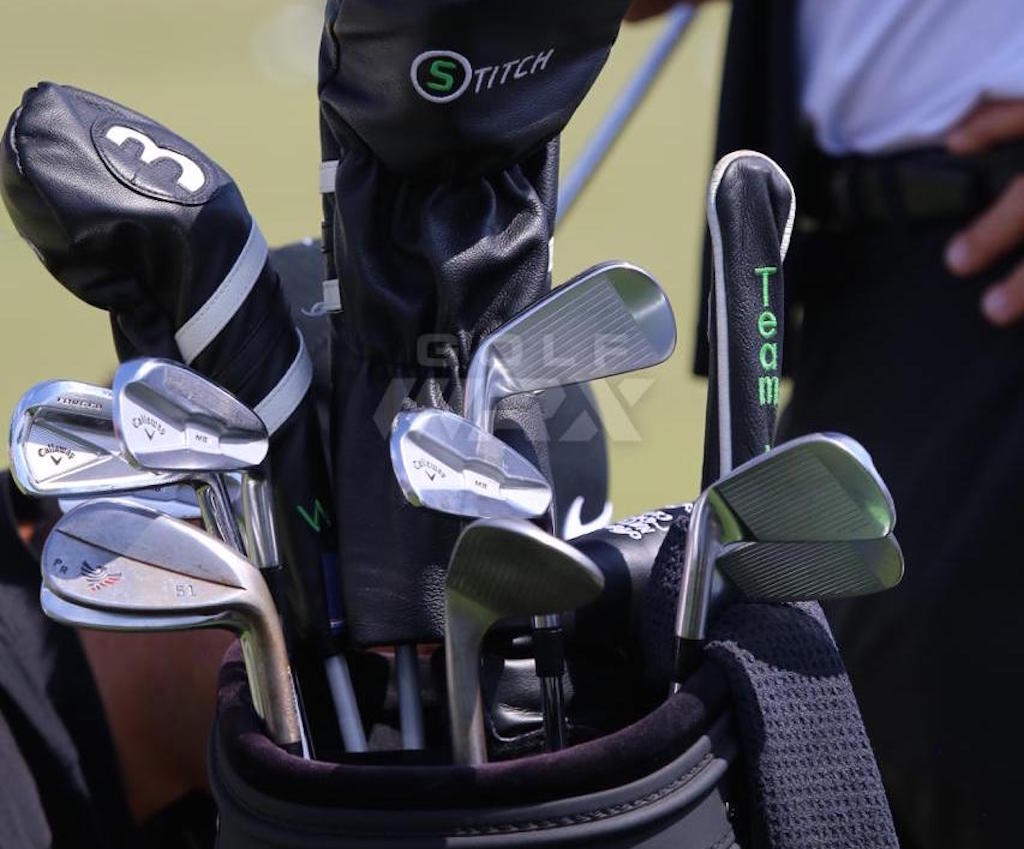
At the 2018 Masters, Patrick Reed bested Rickie Fowler by a stroke at Augusta National to win his first major championship.
See the clubs Reed used to fire his final-round 71 below.
Driver: Ping G400 LST (10 degrees)
Shaft: Aldila Rogue Silver 110 M.S.I. 70 TX
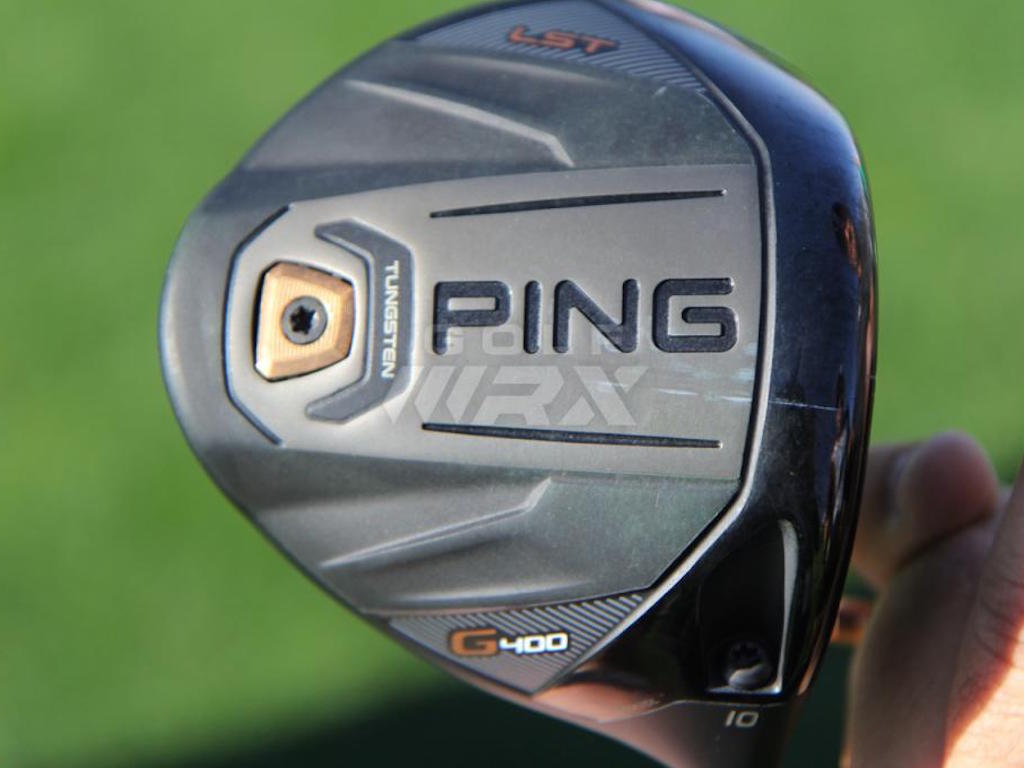
3-wood: Nike VR Pro Limited Edition (15 degrees)
Shaft: Aldila Rogue Silver 110 M.S.I. 80 TX
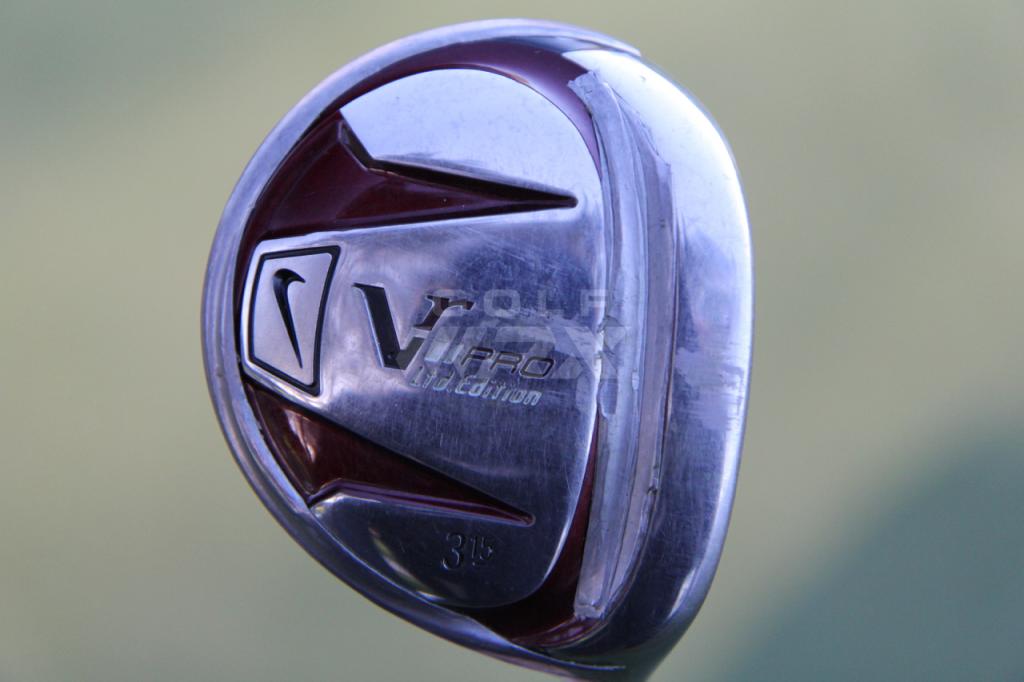
Driving iron: Titleist 716 T-MB
Shaft: True Temper Dynamic Gold Tour Issue 120 X100
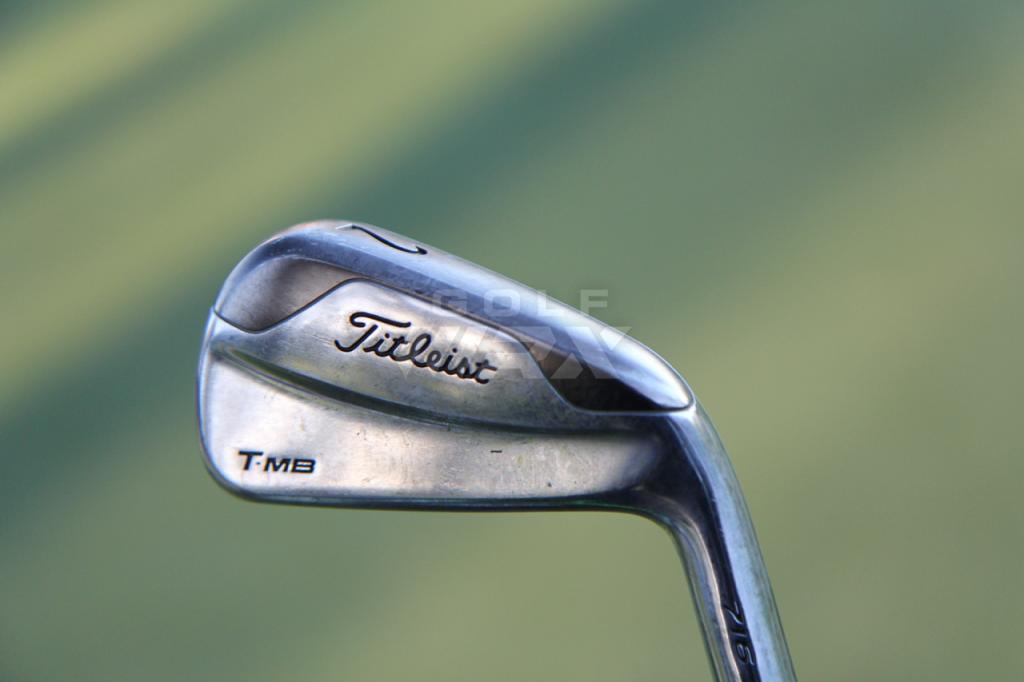
Irons: Callaway X Forged 2013 (4), Callaway MB-1 (5-PW)
Shaft: True Temper Dynamic Gold Tour Issue X100
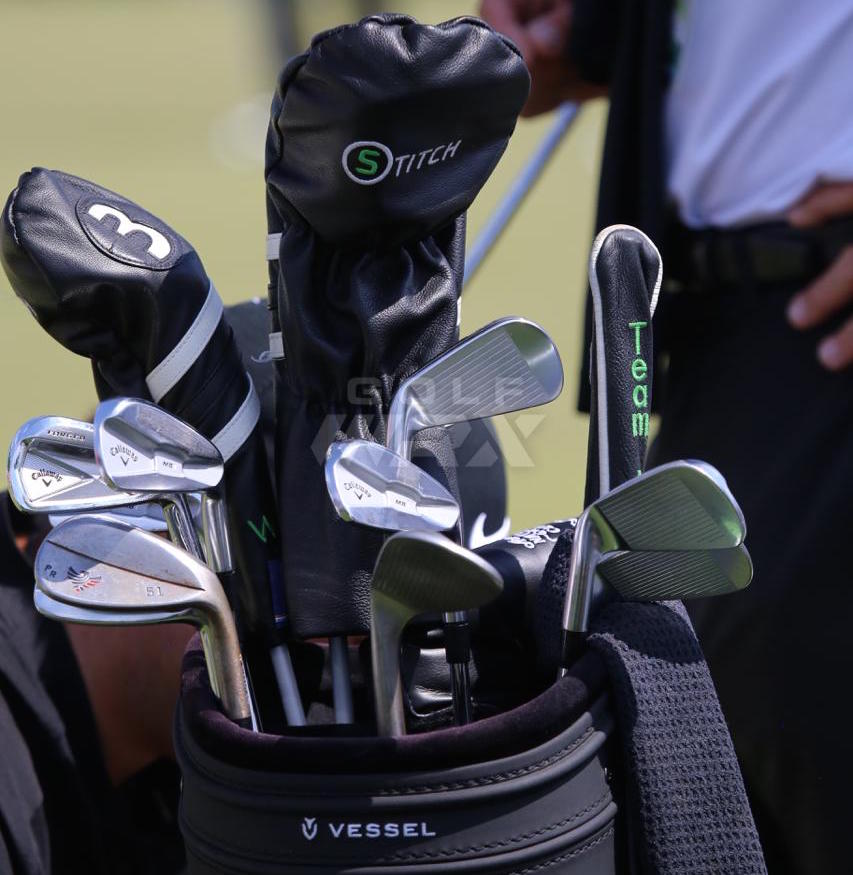
Wedges: Artisan Prototype (51 and 56 degrees), Titleist Vokey Design SM5 (61 degrees)
Shaft: True Temper Dynamic Gold Tour Issue S400
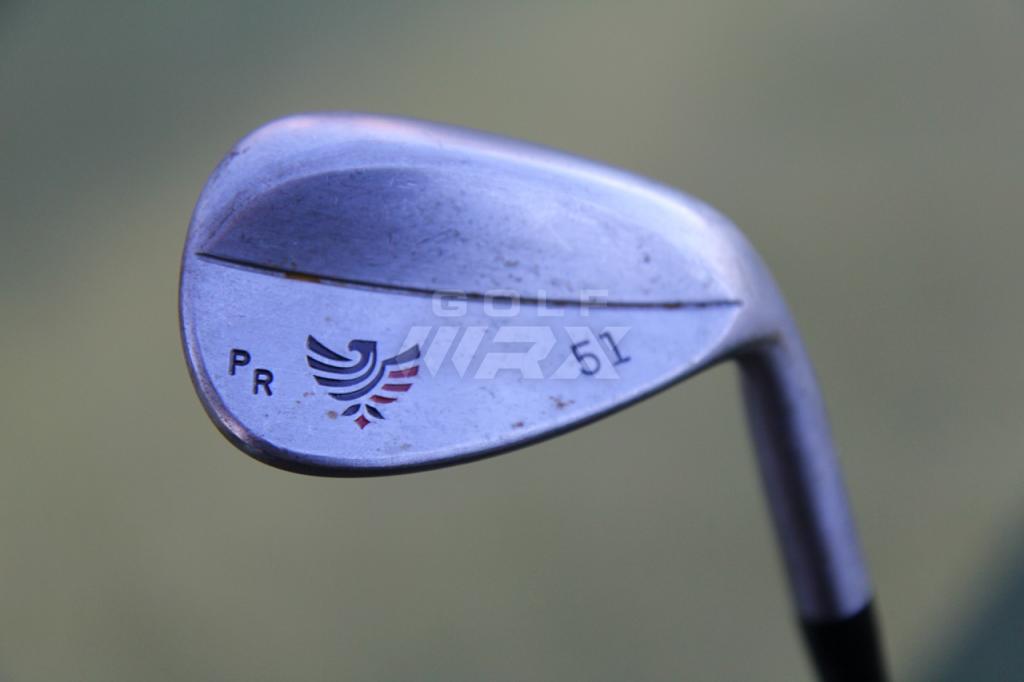
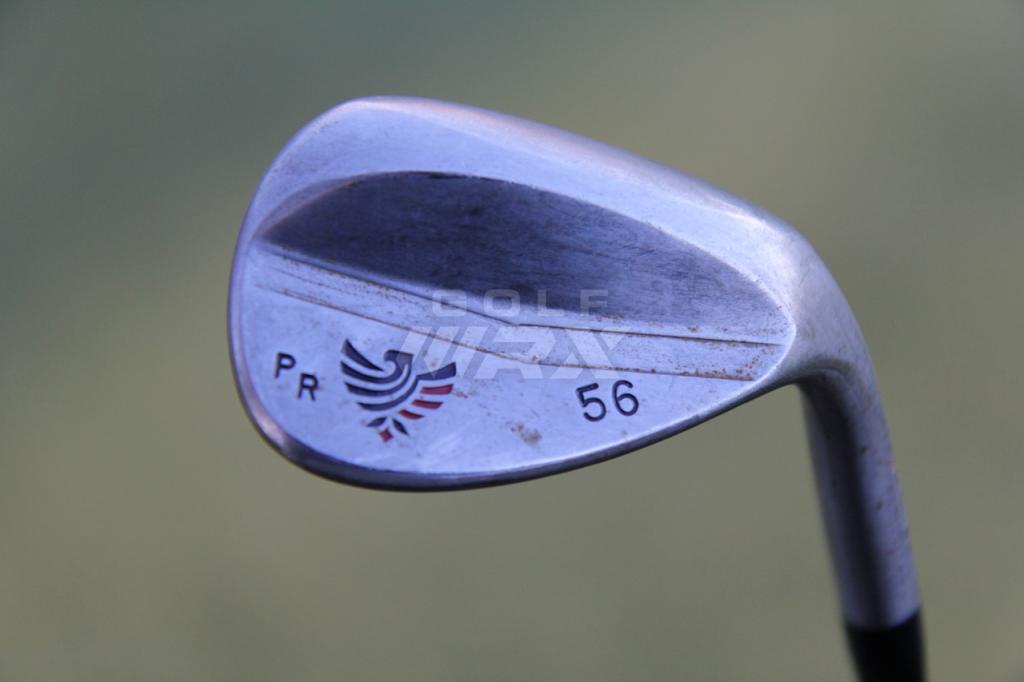
Putter: Odyssey White Hot Pro 3
Grip: Iomic Standard Red Pistol
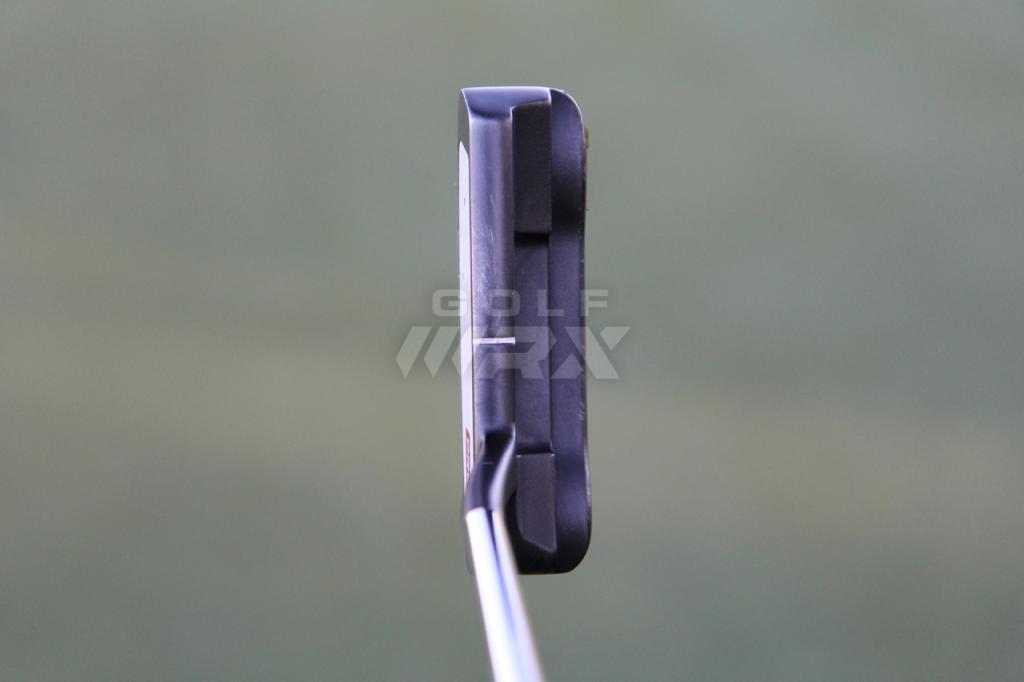
Ball: Titleist Pro V1
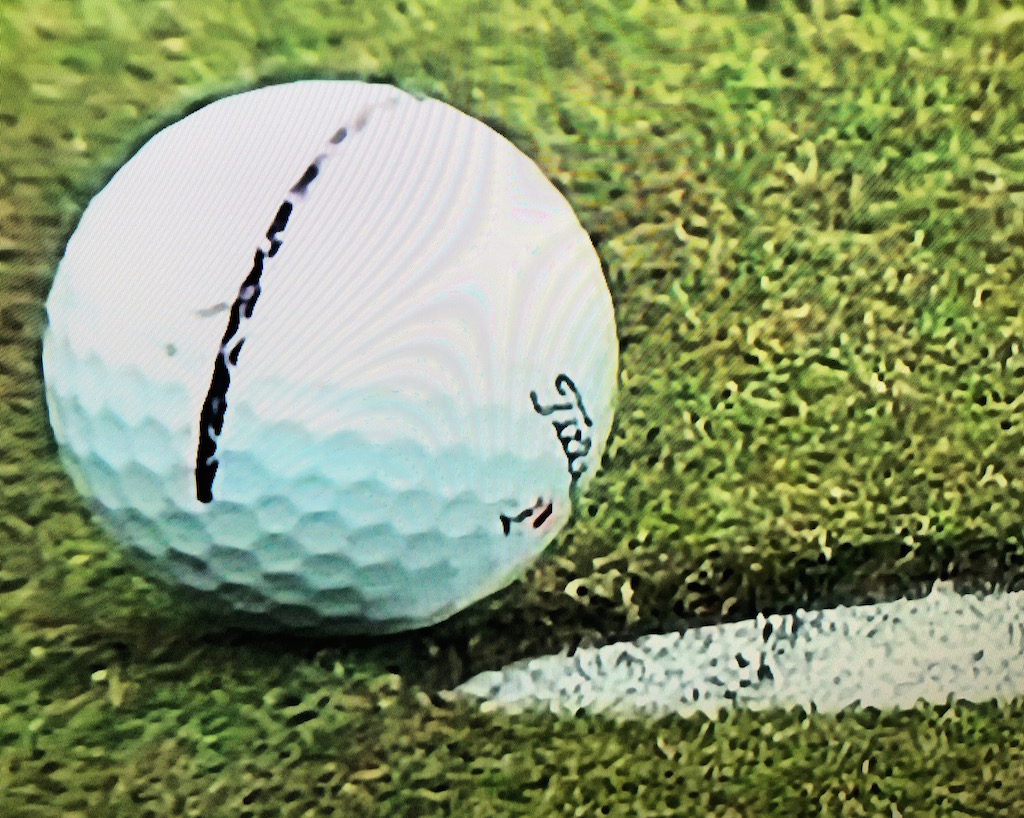
Grips: Golf Pride MCC (All black, installed logo down, with two wraps of double-sided tape)
- LIKE1
- LEGIT0
- WOW0
- LOL0
- IDHT0
- FLOP0
- OB0
- SHANK0
-

 19th Hole2 weeks ago
19th Hole2 weeks agoJohn Daly stuns fans into silence with brutal opening tee shot on PGA Tour Champions
-

 19th Hole1 week ago
19th Hole1 week agoThings got heated at the Houston Open between Tony Finau and Alejandro Tosti. Here’s why
-

 19th Hole2 days ago
19th Hole2 days agoTiger Woods arrives at 2024 Masters equipped with a putter that may surprise you
-

 19th Hole7 days ago
19th Hole7 days agoReport: Tiger Woods has ‘eliminated sex’ in preparation for the 2024 Masters
-

 19th Hole3 weeks ago
19th Hole3 weeks ago2-time major champ announces shock retirement from the sport at age of 33
-

 19th Hole2 weeks ago
19th Hole2 weeks agoCharlie Woods finds it tough going on American Junior Golf Association debut
-

 19th Hole1 week ago
19th Hole1 week agoAddiction, spinal fusion, and scam artists – Everything Anthony Kim revealed in candid interview with David Feherty
-

 19th Hole6 days ago
19th Hole6 days agoAnthony Kim says doctors told him that he ‘may not have much time left’ ahead of LIV return















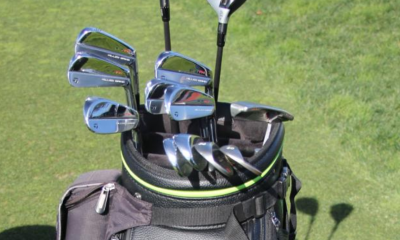

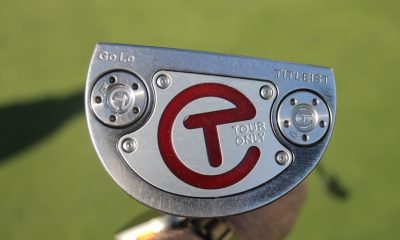

Sean
Jul 18, 2009 at 11:00 pm
I’ve see you play with the Callaway’s and the HG’s. You are much better with the HG’s, but not as good as the righty!